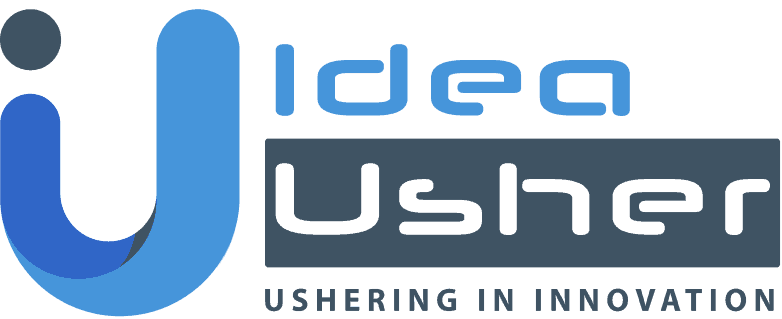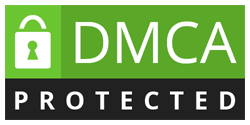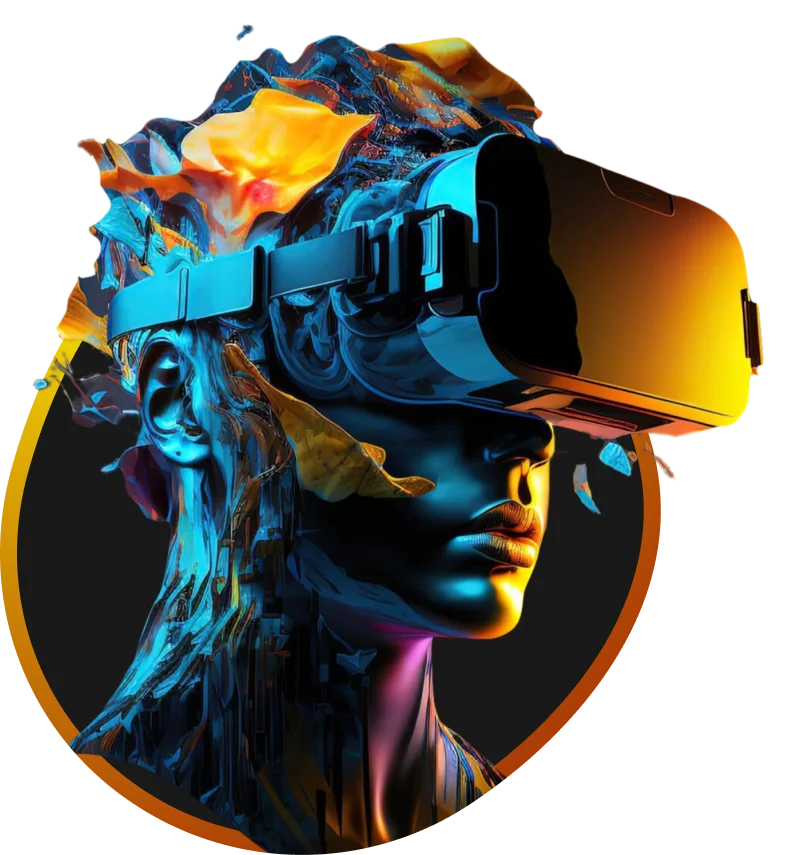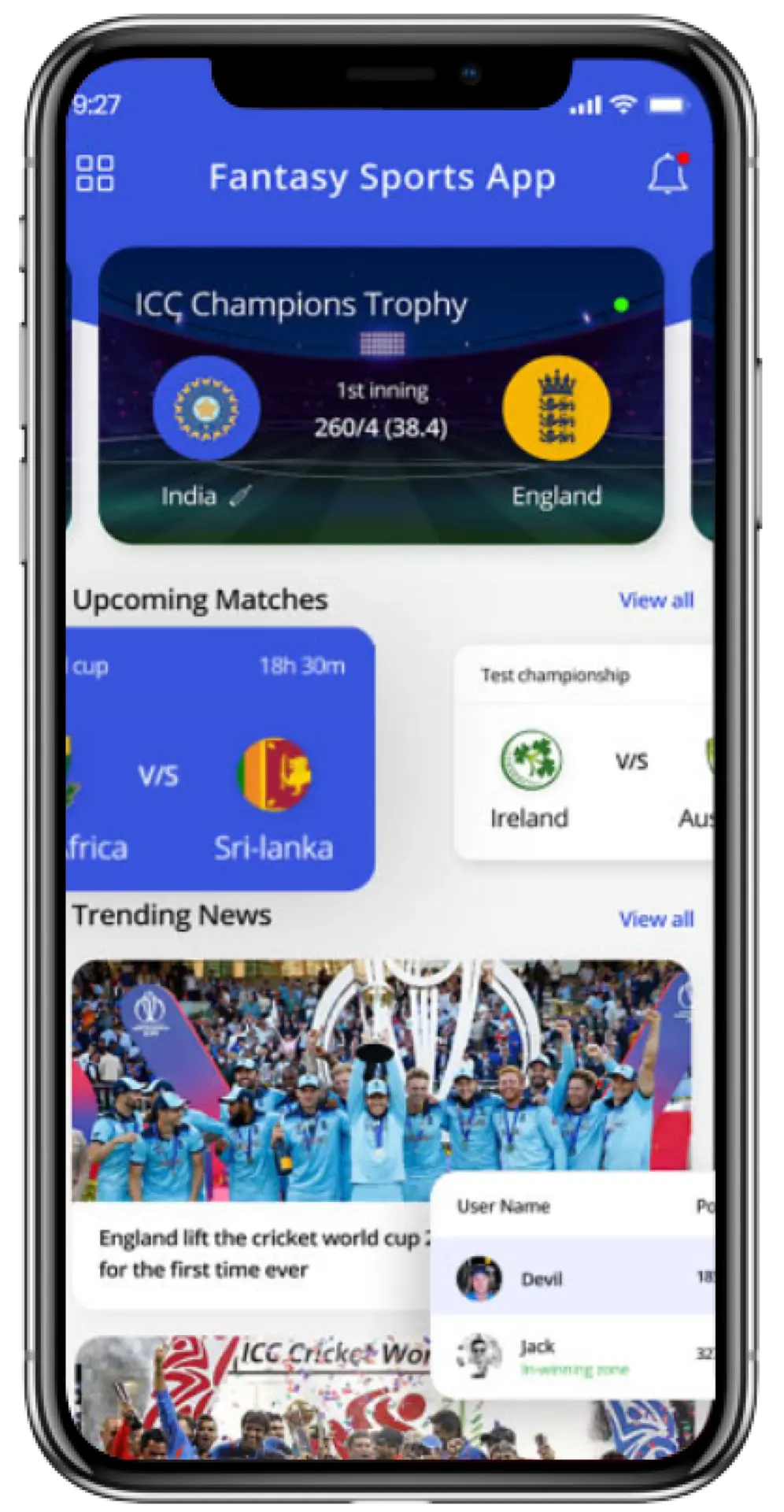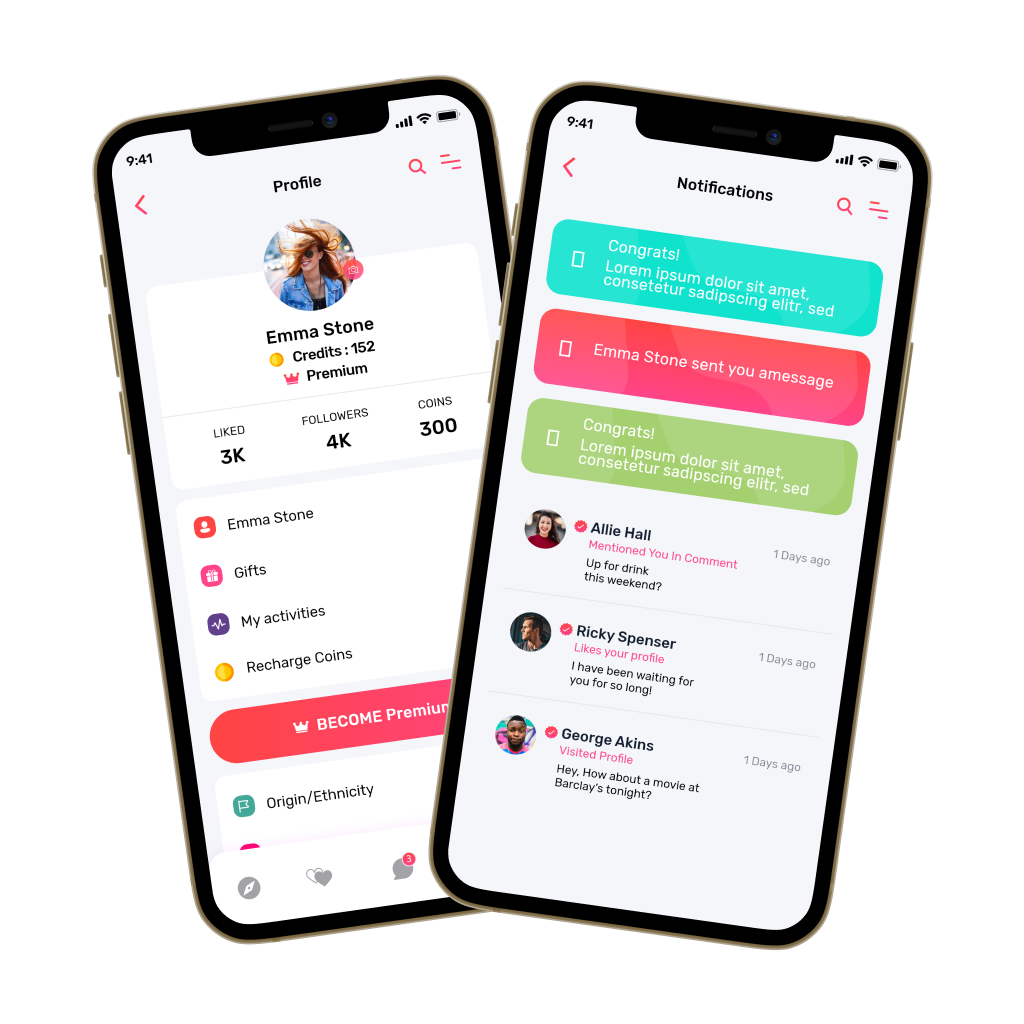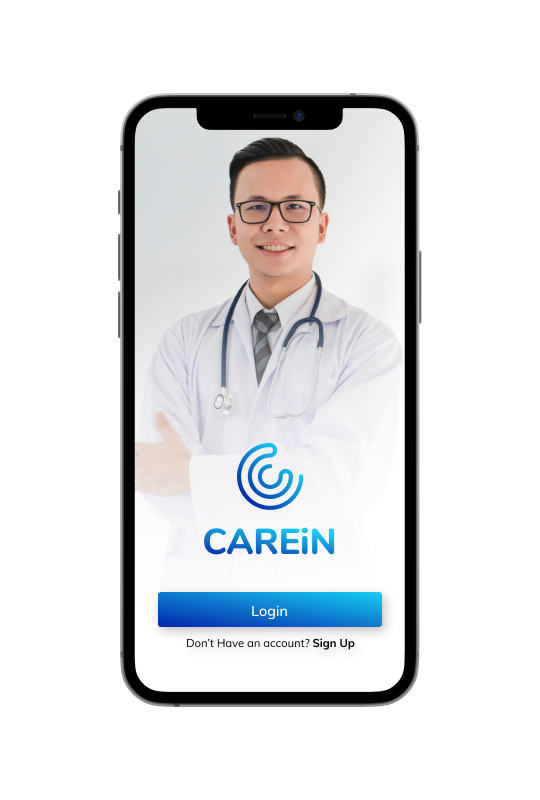Clinical Decision Support apps integrated with Electronic Health Records are transforming how healthcare providers make critical decisions. These apps leverage patient data, medical knowledge, and AI to deliver real-time, evidence-based insights directly within the clinical workflow.
Building a CDS app that works seamlessly with EHR systems requires a strong understanding of interoperability standards, patient data privacy, and the specific clinical use cases it aims to support. In this guide, we’ll explore how to design, develop, and integrate CDS solutions that improve diagnostic accuracy, reduce errors, and enhance patient care.
We’ve helped numerous organizations create clinical decision support apps that seamlessly integrate with EHR systems and we think we can guide you better so in this blog, we’ll explore how to build clinical decision support apps integrated with EHR systems, discussing key features, benefits, and how to develop a seamless, data-driven solution.
Key Market Takeaways for Clinical Decision Support Apps with EHR
According to GrandViewResearch, the global market for Clinical Decision Support Systems is on track for significant growth, projected to expand from USD 5.79 billion in 2024 to USD 10.71 billion by 2030. This growth, driven by the increasing need for higher-quality healthcare and the integration of advanced technology, is expected to follow a CAGR of 11.0% from 2025 to 2030. North America is leading the market, contributing to over 43% of the global share in 2024, thanks to rapid advancements in technology and a strong push towards digitizing healthcare systems.
Source: GrandViewResearch
Clinical decision support apps integrated with EHR have become a cornerstone in enhancing healthcare delivery. These apps help streamline workflows by providing real-time, evidence-based recommendations directly at the point of care.
By embedding CDS into EHRs, healthcare providers can access crucial patient-specific alerts, medication checks, diagnostic support, and customized care pathways without leaving their workflow. This integration not only reduces administrative burdens but also helps to prevent medication errors, enables early interventions, and ultimately improves patient outcomes, while also enhancing clinician satisfaction.
Leading companies in the EHR space are advancing the development of integrated CDS tools. Major vendors such as Epic, Cerner (Oracle Health), and Allscripts have incorporated CDS functionalities into their platforms, offering valuable features like medication alerts and clinical guidelines.
Partnerships like Mayo Clinic’s collaboration with Verily, focused on developing cardiovascular care tools, and Elsevier’s expansion of its ClinicalKey AI, now integrated with Epic’s EHR system, are helping to make clinical insights more accessible and actionable for healthcare professionals at the point of care.

What Are Clinical Decision Support Apps?
Clinical Decision Support apps are digital tools designed to help healthcare providers make informed, evidence-based decisions at the point of care. These apps analyze patient data from Electronic Health Records and other sources, offering real-time recommendations such as:
- Diagnosis suggestions based on symptoms and medical history
- Medication alerts for potential drug interactions or allergies
- Treatment guidelines that align with the latest clinical research
- Risk prediction models for conditions like sepsis, stroke, or diabetes
By integrating seamlessly into clinicians’ workflows, CDS apps reduce cognitive overload, minimize errors, and improve patient outcomes.
Key Technologies Enabling CDS in EHRs
Technologies like FHIR enable secure data sharing across systems, while SMART on FHIR makes it easier to integrate third-party apps into EHR platforms, improving clinical decision support. AI and machine learning enhance these tools by analyzing patient data to provide real-time, actionable insights.
A. FHIR or Fast Healthcare Interoperability Resources
FHIR is the global standard for healthcare data exchange. It enables CDS apps to pull and interpret patient data from different EHR systems. Unlike older protocols, FHIR uses RESTful APIs, making integration faster and more scalable.
B. SMART on FHIR
SMART on FHIR is a framework that enables third-party apps to securely run within EHR platforms like Epic, Cerner, and Allscripts. It ensures features like single sign-on (SSO) and contextual data access, such as launching a CDS app directly from a patient’s chart.
C. AI & Machine Learning
AI and machine learning models analyze both structured and unstructured data from EHRs, such as lab results and physician notes, to generate predictive insights. For example, an ML-powered CDS app can detect early signs of heart failure by tracking subtle trends in a patient’s blood pressure and weight data.
Why Enterprises Should Invest in CDS Apps?
Enterprises should invest in CDS apps to comply with evolving regulations and improve patient outcomes, which are tied to reimbursement in value-based care models. These tools also help reduce errors, enhance efficiency, and future-proof healthcare delivery through AI and interoperability.
A. Compliance with Evolving Regulations
The CMS Interoperability Rules (2025 Update) require EHR systems to support FHIR-based CDS tools to participate in federal programs like MIPS, while the ONC Cures Act Final Rule mandates EHR vendors to enable SMART on FHIR integrations for third-party CDS apps. Non-compliance with these regulations can result in penalties and exclusion from value-based care contracts, making it essential for healthcare organizations to adopt these technologies to stay competitive and compliant.
B. Competitive Edge in Value-Based Care
CDS apps help providers meet key quality metrics, such as reducing readmissions and improving diagnosis accuracy, which are tied to reimbursement in value-based care models.
- For EHR Platform Owners: Offering built-in or integrable CDS tools attracts healthcare systems seeking AI-driven decision support.
- For Hospitals: CDS apps help prevent costly errors, such as adverse drug events, which contribute to $20B/year in preventable healthcare spending.
C. Future-Proofing Healthcare Delivery
The 2025 healthcare landscape will demand interoperable, AI-driven tools to address challenges like clinician burnout and data overload. Early adopters of CDS apps will be at the forefront of advancing telehealth, precision medicine, and population health management, positioning themselves as leaders in the evolving healthcare ecosystem.

Key Features to Include in a Clinical Decision Support App with EHR
After developing numerous clinical decision support apps and receiving feedback from healthcare providers, we’ve identified key features that have proven to be game-changers. These are the features that clinicians actually find useful and are making a real impact in improving patient care. Here’s a look at the standout features that have become a hit:
1. Context-Aware Alerts and Reminders
We’ve found that users really appreciate alerts that don’t just notify them of a potential issue but offer concrete next steps. For example, if a drug interaction is flagged, clinicians are immediately given actionable options, such as “Change Medication” or “Consult Pharmacist.” This relevance, based on the patient’s data, reduces unnecessary alerts and helps avoid alert fatigue.
2. Interactive Order Sets and Pathways
Clinicians love being able to choose from evidence-based order sets for conditions like pneumonia or sepsis, and then customize them as needed. These sets are dynamic, providing real-time feedback on how changes impact clinical guidelines and costs, which makes the decision-making process smoother while still allowing for flexibility and clinical judgment.
3. Dynamic Diagnostic Workflows
Interactive diagnostic workflows are a favorite among our users. The app suggests possible diagnoses based on the patient’s symptoms and lab results, ranked by likelihood. Clinicians can then easily dive deeper into each suggestion, seeing evidence and recommended tests. This makes the diagnostic process more thorough and data-driven, helping clinicians make better-informed decisions.
4. Personalized Treatment Recommendations
One feature that stands out is the ability to simulate different treatment scenarios. Clinicians can compare several treatment options, tailored to the specific patient’s age, medical history, and comorbidities. The “What-If” scenarios let them explore how different treatments might affect things like blood pressure or kidney function, providing a more personalized approach to care.
5. Evidence-on-Demand and Contextual Information Retrieval
Access to up-to-date, relevant evidence directly within the app is a feature clinicians value highly. Instead of searching outside the system for clinical guidelines or research, users can click to pull up the latest studies and treatment recommendations right within the app, ensuring that decisions are based on the most current information.
6. Interactive Patient Summaries and Visualizations
Our users love the interactive patient dashboards that turn complex medical data into easy-to-read charts and graphs. These visualizations allow clinicians to track vital signs, lab results, and medication adherence over time, helping them spot trends, monitor progress, and detect potential issues faster.
7. Medication Reconciliation and Formulary Checks
Medication reconciliation becomes much easier when the app not only flags potential issues but also suggests alternative medications from the formulary. This feature saves time and reduces errors, offering clinicians medication options that are both safe and cost-effective, while checking for insurance coverage and prior authorization needs.
8. Risk Calculators and Scoring Tools
Risk calculators that pull in data directly from the EHR are a huge time-saver. Clinicians don’t have to manually input patient details into separate tools; instead, risk scores for conditions like stroke or readmission are automatically generated. This streamlines the decision-making process, providing instant risk assessments that are both accurate and easy to use.
9. Feedback Mechanisms and Customization Options
We’ve made it easy for clinicians to provide feedback on the app’s alerts and recommendations, ensuring continuous improvement. Customization options allow users to tailor the system to fit their preferences, such as setting the level of detail for alerts or adjusting what types of notifications they receive. This level of flexibility has been a big win with users.
10. Integration with Patient Engagement Tools
Integrating patient education materials directly into the app has been a real hit. When clinicians make a diagnosis or prescribe a treatment, the app automatically generates educational content that they can easily share with patients. This not only saves time but also empowers patients with the knowledge they need to make informed decisions about their care.
Step-by-Step Process to Build a CDS App with EHR
We’ve worked with numerous healthcare organizations to build effective CDS apps that integrate seamlessly with EHR systems. Our process is focused on understanding the unique challenges our clients face and developing solutions that improve clinical decision-making, enhance workflow efficiency, and ensure patient safety. Here’s how we approach the development of a CDS app with EHR integration for our clients:
Step 1: Define Clinical Objectives and User Workflows
We start by collaborating closely with our clients to clearly define the clinical problems the app will solve. Whether it’s improving diagnosis accuracy, reducing medication errors, or enhancing treatment recommendations, we ensure the app aligns with your clinical goals. We also map out how your healthcare providers will interact with the app, ensuring that it fits smoothly into their existing workflows without adding unnecessary complexity.
Step 2: Choose the Right EHR Integration Standards
We then help our clients select the best EHR integration standards, such as FHIR or SMART on FHIR, based on their current system architecture. For clients using systems like Epic or Cerner, we recommend SMART on FHIR to ensure seamless integration, while FHIR offers a flexible, scalable solution for data exchange. We can also implement proprietary APIs if needed for custom integrations, ensuring that the app works smoothly with your existing EHR system.
Step 3: Design Data Models and Decision Logic
Our team designs evidence-based decision-making logic that drives the app’s recommendations and alerts. This includes creating algorithms, rules, and triggers tailored to your clinical needs. Whether it’s flagging potential drug interactions or suggesting a differential diagnosis based on patient data, our goal is to ensure the app delivers accurate, real-time recommendations that support clinicians in making the best possible decisions.
Step 4: Develop and Secure the Application
Next, we build the front-end and back-end components of the app, ensuring a user-friendly interface that’s easy for clinicians to navigate. Our development process places a strong emphasis on security, with all patient data stored and transmitted in compliance with HIPAA and other regulatory requirements. We use encryption, secure authentication, and access controls to ensure patient privacy and system integrity.
Step 5: Test Interoperability with EHR Systems
Once the app is developed, we conduct extensive testing to ensure it integrates seamlessly with your existing EHR system. We begin with sandbox testing in a controlled environment, followed by live testing to ensure the app functions correctly in real-world conditions. This helps us identify and address any issues with data flows or system interactions before the app goes live.
Step 6: Deploy, Monitor, and Iterate
After successful testing, we deploy the app into production. But we don’t stop there, we continuously monitor its performance, track user feedback, and gather real-world data. Our team works closely with you to refine the app’s decision support logic and fix any issues, ensuring that it continues to meet your evolving clinical needs and delivers value over time.

Cost of Building a Clinical Decision Support App with EHR
We adopt a cost-effective strategy to develop CDS apps with EHR integration, ensuring maximum value for our clients. Our approach balances quality and affordability throughout the process.
Phase 1: Planning and Discovery
| Task | Cost Range | Description |
| Clinical Problem Definition & Use Case | $200 – $1,500 | Identifying specific needs, target users, and desired outcomes. |
| Stakeholder Engagement | $500 – $3,000 | Interviews, workshops, and gathering clinical insights. |
| Feasibility Study & Tech Stack Selection | $300 – $2,000 | Assessing data accessibility and choosing core technologies. |
| Data Source Identification & Mapping | $500 – $3,500 | Understanding EHR data points and interoperability standards (e.g., FHIR). |
| Total | $1,000 – $8,000 |
Phase 2: Design and Architecture
| Task | Cost Range | Description |
| System Architecture Design | $1,000 – $7,000 | Defining major components, considering microservices for scalability. |
| EHR Integration Strategy | $500 – $4,000 | Planning for FHIR API or SMART on FHIR integration. |
| CDS Logic Design | $500 – $5,000 | Structuring rule-based systems or outlining ML model requirements. |
| UI/UX Design | $1,000 – $6,000 | Creating wireframes, mockups, and prototypes for a clinician-centric interface. |
| Total | $2,000 – $15,000 |
Phase 3: Development and Implementation
| Task | Cost Range | Description |
| Frontend Development (UI) | $2,000 – $20,000 | Building user interface components (e.g., in React, Angular). |
| Backend Development | $2,000 – $25,000 | Creating server-side logic, APIs, and data processing. |
| EHR Integration Layer Development | $1,000 – $10,000 | Implementing connectors to pull/push data from/to the EHR (FHIR/SMART). |
| CDS Logic Engine Development | $1,000 – $15,000 | Coding rule engine or integrating/tuning ML models. |
| Database Development | $500 – $5,000 | Setting up and optimizing the database for CDS-specific data. |
| Security Implementation | Included in other costs | Implementing authentication, encryption, audit trails. |
| Total | $5,000 – $60,000 |
Phase 4: Testing and Validation
| Task | Cost Range | Description |
| Unit, Integration, System, and Performance Testing | $500 – $5,000 | Standard software quality assurance. |
| Security Testing | $500 – $3,000 | Vulnerability assessments and penetration testing. |
| Clinical Validation | $500 – $3,000 | Pilot testing with clinicians, UAT, and assessing clinical effectiveness. |
| Bias Testing (for AI/ML) | $500 – $2,000 | Ensuring fairness and accuracy of AI models. |
| Total | $1,000 – $12,000 |
Phase 5: Deployment, Monitoring, and Maintenance
| Task | Cost Range | Description |
| Deployment | $300 – $2,000 | Setting up the production environment on a secure cloud platform. |
| Training and Adoption | $200 – $1,500 | Developing materials and conducting training sessions. |
| Monitoring and Logging | $500 – $2,000 | Implementing tools for performance and error tracking. |
| Initial Maintenance & Updates | $500 – $2,000 | Addressing immediate post-deployment issues and planning for future updates. |
| Total (initial) | $500 – $5,000 | |
| Ongoing Costs | Varies | Ongoing maintenance, updates, and cloud infrastructure. |
Please note that the costs provided are estimates, and the total price for developing a CDS app with EHR integration typically ranges from $10,000 to $100,000 USD. For a more accurate quote based on your specific requirements, feel free to reach out to us for a free consultation.
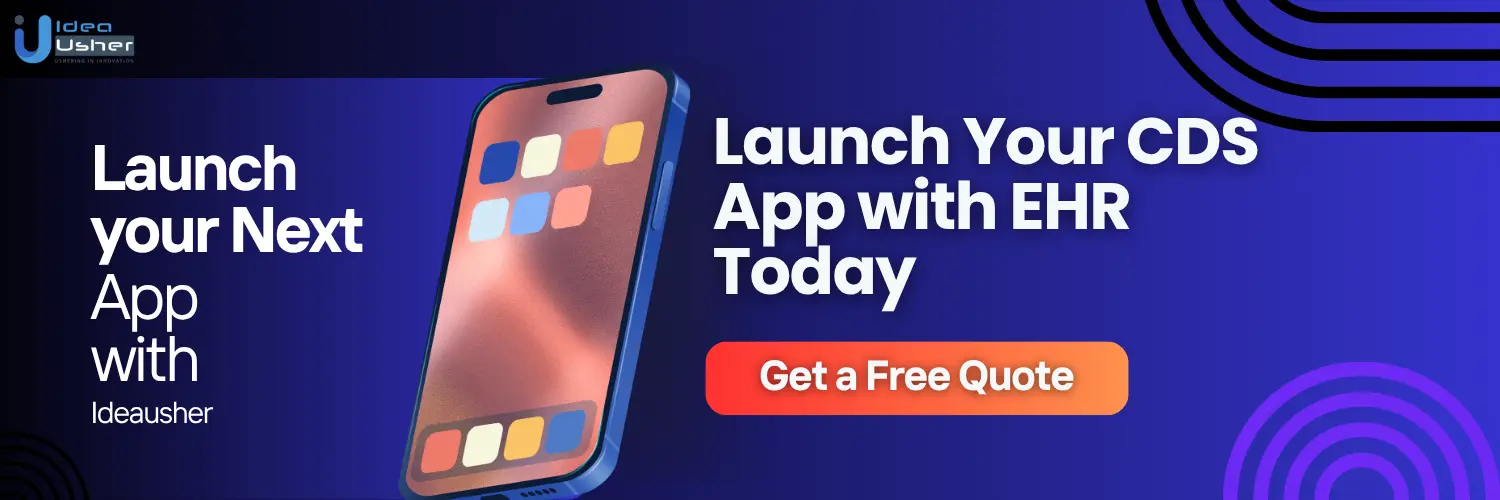
Factors Affecting the Cost of Developing a Build CDS App with EHR
Developing a CDS application with EHR integration comes with a unique set of challenges that can significantly impact the overall cost. Beyond the typical considerations in software development, the healthcare sector introduces specific complexities that demand more time, expertise, and resources.
The complexity of CDS Logic
The level of sophistication in the decision-making logic plays a major role in the development cost. Basic, rule-based systems are quicker and cheaper to implement. However, when incorporating advanced AI or machine learning models that require large datasets, validation, and continuous updates, the cost can rise substantially.
EHR Integration Depth and Specificity
The degree to which the CDS app integrates with the EHR system affects the cost. Simple data retrieval, such as pulling patient demographics or lab results, is relatively easy. But real-time, two-way data exchange, or integrating with multiple, diverse EHR systems (each with its own set of APIs and data standards), introduces significant challenges and higher costs.
Regulatory Compliance and Security
Healthcare apps need to comply with strict regulations like HIPAA or GDPR, which add layers of complexity and expense. Securing sensitive patient data, ensuring encryption, setting up audit trails, and performing compliance checks all contribute to increased development costs.
Clinical Validation and Testing
CDS apps require more than just standard software testing. They must undergo thorough clinical validation to ensure they function accurately and safely in real-world healthcare settings. This includes working with clinicians for pilot testing, user acceptance testing, and potentially conducting clinical effectiveness studies, which all require significant time and clinical expertise.
Common Challenges and How To Overcome Them
Having worked with numerous healthcare providers, we’ve encountered a range of challenges when developing clinical decision support apps with EHR integration. With this experience, we’ve refined our approach to overcome these obstacles and deliver effective solutions for our clients.
1. Data Privacy and Compliance
Healthcare data is extremely sensitive and must comply with various regulations, including HIPAA (US), GDPR (EU), ONC certification for EHR-integrated apps, and state-specific laws like California’s CCPA. Ensuring compliance can be a complex and time-consuming process.
How We Overcome It:
- End-to-End Encryption: We protect data in transit and at rest using AES-256 and TLS 1.3 to ensure confidentiality.
- Role-Based Access Control (RBAC): Only authorized personnel, such as physicians and nurses, can access patient data, ensuring minimal exposure.
- Audit Logs & Monitoring: We implement robust logging and monitoring systems to track all access attempts, providing transparency and supporting compliance reporting.
- Partnering with Compliant Hosting Providers: We use trusted cloud platforms like AWS GovCloud, Microsoft Azure HIPAA BAA, or Google Cloud Healthcare API to ensure compliance with relevant standards.
2. Complex EHR Integration
EHR integration is often a significant hurdle due to issues like varying data formats across systems (e.g., LOINC vs. SNOMED CT codes), authentication complexities (OAuth 2.0, SMART on FHIR), and challenges like API rate limits and latency, especially when real-time data retrieval is needed.
How We Overcome It:
- FHIR APIs for Standardization: We standardize data handling by using FHIR APIs, reducing custom mapping efforts.
- SMART on FHIR for SSO: This allows single sign-on (SSO) capabilities for smoother clinician workflows and improved user experience.
- Optimizing API Calls: We cache frequently accessed data, reducing latency and improving real-time decision support.
- Testing in a Sandbox Environment: We use tools like Epic’s Hyperspace SDK and Cerner’s Code Console to test integrations before deployment, ensuring smooth functionality.
3. Clinical Validation
Clinical validation is critical to ensure that CDS apps provide accurate and relevant decision support. However, challenges like false alerts, bias in AI models, and regulatory scrutiny (e.g., FDA approval for high-risk CDS apps) can complicate this process.
How We Overcome It:
- Clinically Validated Knowledge Bases: We integrate trusted clinical resources like UpToDate, DynaMed, or BMJ Best Practice to ensure the accuracy of decision support.
- Real-World Data Testing: Partnering with hospitals allows us to conduct retrospective validation studies, ensuring our CDS solutions work effectively in actual clinical settings.
- Bias Mitigation: We audit AI models for fairness, ensuring they are unbiased and representative across various demographics like age, gender, and ethnicity.
- FDA Clearance (if Required): For high-risk CDS applications, we follow the De Novo pathway for FDA approval to ensure compliance and safety.
4. User Adoption
Clinicians may resist new tools due to workflow disruptions, lack of training, or distrust of algorithmic suggestions. Overcoming these barriers is crucial for successful implementation.
How We Overcome It:
- Embedding CDS into Existing EHR Workflows: We integrate decision support directly into commonly used EHR platforms, such as Epic’s Hyperspace or Cerner’s PowerChart, so clinicians can seamlessly use the tool without disrupting their usual processes.
- Gamifying Training: We create engaging, interactive training materials like short video demos and simulations to make learning easier and more enjoyable.
- Starting with Passive Alerts: We begin with alerts that clinicians can dismiss, gradually transitioning to more active suggestions once trust and familiarity are established.
- Collecting Feedback & Iterating: Using Net Promoter Score (NPS) surveys, we continuously refine the user experience, ensuring the app evolves based on clinician input.
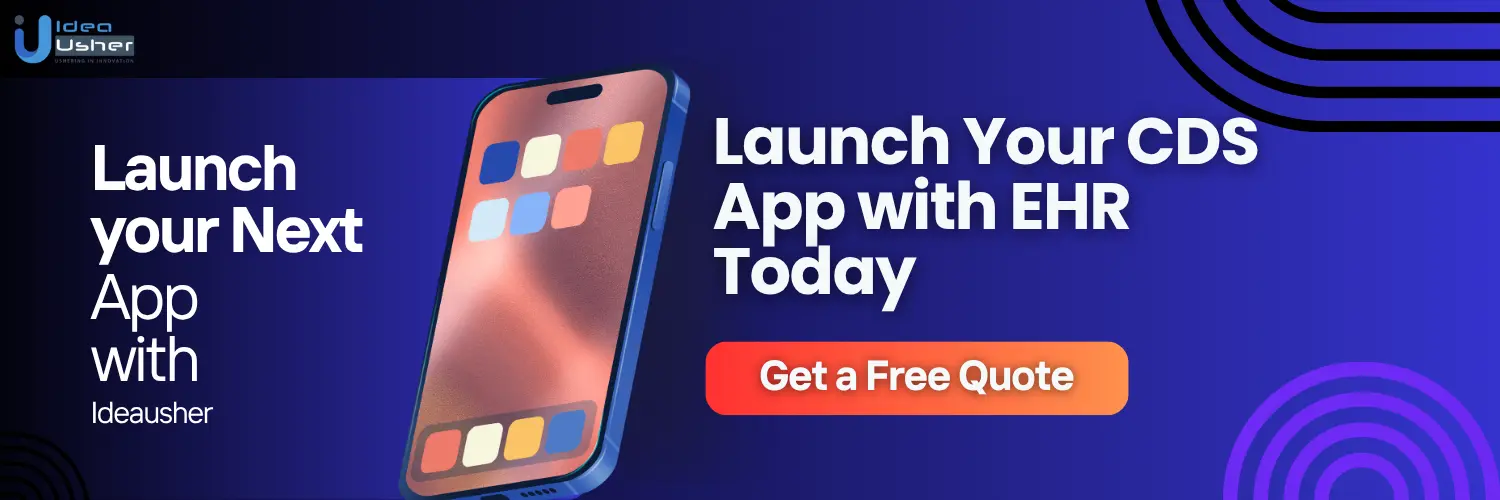
Tools, APIs, and Frameworks For Building a CDS App with EHR
Having worked with a diverse range of clients, we’ve developed a deep understanding of the tools, APIs, and frameworks that streamline the development of CDS apps with EHR integration. Our goal is to use the most effective, secure, and scalable technologies to ensure a seamless experience for both healthcare providers and patients.
Core Interoperability Frameworks
1. SMART on FHIR
SMART on FHIR is the go-to framework for building interoperable healthcare apps. It allows secure embedding within EHRs and enables features like single sign-on (SSO) and context-aware launching from patient charts in systems like Epic and Cerner.
2. HL7 FHIR Server
HL7 FHIR servers are key for storing and retrieving clinical data in a standardized format. These servers, whether open-source or from cloud providers like AWS and Azure, support RESTful APIs that streamline the integration of healthcare data across systems.
EHR-Specific Development Platforms
3. Epic App Orchard
Epic App Orchard offers a certification platform for FHIR-based apps. It provides a sandbox with synthetic data for testing, but apps must pass a review process before they can be deployed within Epic’s Hyperspace.
4. Cerner Open Developer Experience
Cerner’s Open Developer Experience allows developers to test apps with Cerner’s EHR systems. It includes specialized sandboxes and a Bulk FHIR API, making it easier to build apps for population health and large-scale data management.
Security & Authentication
5. OAuth 2.0 for Secure Authentication
OAuth 2.0 ensures secure access to healthcare apps by authenticating users. It supports PKCE for mobile apps, making it a vital part of any SMART on FHIR implementation and helping to maintain patient data security.
6. CDS Hooks
CDS Hooks is a lightweight standard that enables “just-in-time” decision support within EHR workflows. It triggers clinical suggestions based on real-time data, enhancing the decision-making process without disrupting the clinician’s workflow.
Cloud Infrastructure
7. AWS HealthLake & Azure API for FHIR
AWS HealthLake and Azure API for FHIR provide managed services to store, query, and analyze healthcare data in FHIR format. Both offer scalable solutions, with built-in analytics tools for processing large volumes of healthcare data.
8. Google Healthcare API
Google Healthcare API integrates FHIR data with cloud services like BigQuery for analytics. It also includes AI-driven tools for medical imaging, and its Vertex AI integration supports advanced healthcare machine learning applications.
Development Libraries
9. FHIR Libraries (HAPI FHIR, Firely)
FHIR libraries like HAPI FHIR for Java and Firely for .NET streamline the process of integrating FHIR data. These libraries help developers quickly implement FHIR standards in their applications, making integration more efficient.
Specialized Services
10. IdeaUsher’s Custom Integration Services
IdeaUsher specializes in end-to-end development of CDS solutions. Our proprietary middleware and FHIR mapping expertise simplify complex EHR integrations, ensuring regulatory compliance and seamless data sharing between systems.
Implementation Roadmap
The implementation of a CDS app begins with initial testing in a SMART on FHIR sandbox and setting up the infrastructure based on FHIR server needs. Following EHR-specific development, security protocols, and clinical workflow integration, the app undergoes compliance verification and post-launch monitoring.
For faster deployment, utilize pre-built FHIR connectors and compliance templates.
- Start with SMART on FHIR: Test with the public SMART sandbox to validate your app’s integration and functionality.
- Choose Your Primary FHIR Server: Decide between cloud-based or on-prem solutions based on scalability and cost-efficiency.
- Select EHR-Specific Tools: Choose tools like Epic’s App Orchard or Cerner’s Open Developer Experience depending on your target health systems.
- Security First: Implement OAuth 2.0 early on to establish secure authentication workflows.
- Add CDS Hooks: Implement context-aware decision support for real-time clinical insights.
- Optimize with Cloud Analytics: Utilize AWS, Azure, or Google Cloud services for powerful data analytics.
- Validate with Compliance Check: Ensure all development complies with industry standards for regulatory approval.
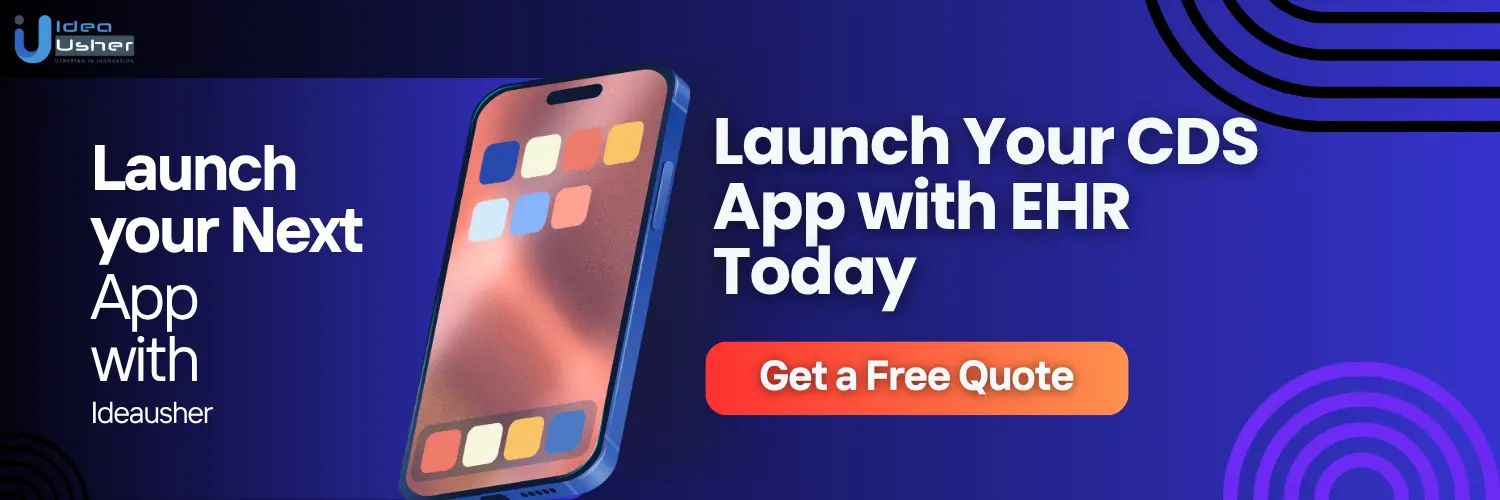
Case Study: CDS App for Chronic Disease Management
One of our healthcare clients, a large hospital network, faced significant challenges in managing diabetes due to manual tracking of patient data, leading to delayed interventions and inconsistent insulin dosing. This resulted in missed hypoglycemia warning signs and frequent severe incidents.
Their goal was to reduce these incidents and enhance clinician efficiency by implementing a solution that integrates with their Epic EHR system, provides real-time recommendations, and automates key aspects of diabetes management.
The Solution: AI-Powered CDS App
To address these challenges, we developed a Clinical Decision Support (CDS) app powered by Epic EHR and AI. Here’s how we solved the problem:
A. Real-Time Data Integration from Epic EHR
We integrated the CDS app with the hospital’s Epic EHR system via FHIR APIs, enabling real-time access to critical patient data like continuous glucose monitoring (CGM) results, lab results, and medication history. This integration removed the need for manual data entry, reducing errors and ensuring clinicians always had accurate, up-to-date information.
B. AI-Driven Insulin Dosage Recommendations
To improve decision-making, we incorporated machine learning models that analyzed patient data and provided real-time insulin dosage recommendations. These models predicted hypoglycemia risks based on glucose trends and patient history while suggesting personalized insulin doses. Integrated directly into Epic’s CDS Hooks, clinicians received actionable alerts within their existing workflow, making it easier to make informed decisions quickly.
C. Automated Alerts for Clinicians
Real-time alerts were a key feature of the app. Clinicians received notifications through Epic In-Basket for non-urgent cases and mobile push alerts for critical situations, like impending hypoglycemia. These alerts helped clinicians intervene earlier, reducing the impact of severe incidents. Additionally, the app’s one-click order feature made it simple to adjust insulin doses quickly.
The Results
After implementing the CDS app, the hospital saw remarkable improvements:
- 30% reduction in hypoglycemia incidents: The AI-driven alerts enabled earlier interventions, preventing severe hypoglycemia cases.
- 15% faster treatment adjustments: With automated data analysis, clinicians could make insulin adjustments more quickly.
- Higher clinician satisfaction: The app’s intuitive design and automated decision support reduced cognitive load, leading to greater adoption and satisfaction among clinicians.
Key Takeaways
- EHR Integration is Essential: Seamless integration between Epic and FHIR ensures clinicians have real-time access to accurate patient data.
- AI Enhances Decision-Making: Predictive analytics and machine learning provide more accurate, tailored recommendations, improving patient outcomes.
- Clinician Adoption is Critical: Effective technology must integrate smoothly into existing workflows, providing alerts and recommendations in a non-disruptive way that enhances care delivery.
Top 5 Clinical Decision Support Apps with EHR
After thorough research and firsthand experience, we’ve identified the top CDS apps integrated with Electronic Health Records. These apps are transforming the way healthcare professionals make decisions, improve patient care, and streamline workflows.
1. Epic Systems
Epic is a leader in the EHR and CDS space, known for its seamless integration and powerful features. With real-time alerts for medication interactions and allergies, evidence-based order sets, and predictive analytics, Epic is designed to enhance decision-making and patient safety. It’s used by large hospital systems around the world, supporting millions of patient records and thousands of concurrent users.
2. Wolters Kluwer UpToDate
UpToDate is a trusted clinical reference tool that integrates directly into EHR workflows, offering real-time clinical suggestions and treatment protocols. The platform is continuously updated with medical content from thousands of experts, providing clinicians with evidence-based information at the point of care. Used by over 2 million clinicians worldwide, UpToDate has been shown to improve patient outcomes and reduce diagnostic errors.
3. EvidenceCare
EvidenceCare is a highly specialized CDS platform designed to optimize workflows and deliver actionable, evidence-based insights at the point of care. Integrated directly with EHRs, it provides real-time alerts for potential errors and deviations from clinical guidelines. It also offers specialty-specific modules for different care settings, including emergency, inpatient, and outpatient care.
4. Statin Choice Decision Aid (Mayo Clinic)
The Statin Choice Decision Aid, integrated into EHR systems, helps clinicians make informed decisions about statin therapy in patients with diabetes and cholesterol issues. By using patient-specific data from the EHR, the tool automates the calculation of a patient’s 10-year cardiovascular risk and supports shared decision-making between clinicians and patients. The tool also keeps track of therapy decisions in the patient’s record, ensuring continuity of care and aligning with evidence-based statin therapy guidelines.
5. MOSAIQ EHR
MOSAIQ is an EHR platform designed for oncology and complex care management. It integrates with other clinical systems to provide a comprehensive view of patient care. Features like automated alerts for treatment schedules, medication safety, and guideline adherence help healthcare teams stay on track. The platform also uses analytics-driven insights to create personalized treatment plans, supporting multidisciplinary care teams with seamless communication.
Conclusion
Clinical Decision Support apps play a vital role in improving clinical outcomes by providing real-time, evidence-based insights that guide healthcare professionals in making informed decisions. By streamlining workflows, reducing diagnostic errors, and enhancing patient safety, these platforms significantly enhance care delivery. At Idea Usher, we specialize in helping platform owners and enterprises plan, build, and integrate secure, compliant CDS solutions that are seamlessly tailored to your unique EHR ecosystem, ensuring your system is efficient, reliable, and aligned with the latest healthcare standards.
Looking to Develop a Clinical Decision Support App with EHR?
At IdeaUsher, we focus on developing AI-powered Clinical Decision Support apps that seamlessly integrate with your EHR systems like Epic, Cerner, and FHIR-enabled platforms. With over 500,000 hours of hands-on experience and a dedicated team of ex-MAANG/FAANG engineers, we’re committed to building solutions that truly support your clinical workflows, helping you enhance patient care, improve decision-making, and optimize operational efficiency.
You can expect,
- SMART on FHIR-ready CDS apps
- Real-time alerts & predictive analytics
- HIPAA-compliant, clinician-friendly workflows
See how our healthcare tech is making a difference. Let’s work together to build the future of precision medicine!
Make sure this content is original, human-first, and free of AI fluff
Work with Ex-MAANG developers to build next-gen apps schedule your consultation now
FAQs
A1: Building a clinical decision support app with EHR integration requires close collaboration with healthcare providers to understand their workflows and needs. The process involves selecting the right EHR system (like Epic or Cerner), choosing appropriate standards like SMART on FHIR, and incorporating features such as real-time alerts, predictive analytics, and evidence-based recommendations. The app must be designed to fit seamlessly within existing clinical processes to ensure user adoption and improve decision-making.
A2: The cost of developing a CDS app with EHR integration varies depending on factors such as the complexity of the app, the features required, and the level of integration with the EHR system. Generally, the development process involves planning, design, coding, testing, and deployment, with costs influenced by the need for compliance, security measures, and real-time data processing. It’s important to have a clear understanding of your requirements to get a more accurate cost estimate.
A3: For CDS apps, strong security measures are essential to protect patient data and ensure compliance with regulations. HIPAA-compliant encryption safeguards sensitive data, while OAuth 2.0 authentication provides secure access management. Role-based access control ensures that only authorized users can access specific information, and continuous monitoring is crucial to detect any security threats. These measures are necessary to maintain trust and meet the legal requirements for healthcare apps.
A4: The most widely adopted standards for EHR integration are FHIR and SMART on FHIR. FHIR provides a modern, standardized framework for exchanging healthcare data, while SMART on FHIR allows for secure integration and enables apps to access EHRs using single sign-on. These standards ensure that healthcare applications can work seamlessly with EHR systems, promoting interoperability and improving patient care across different platforms.





